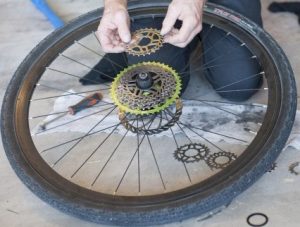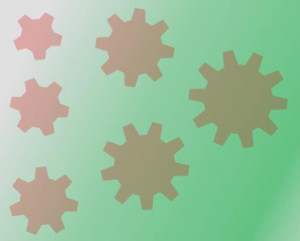Turning Cogwheels


 Cogwheels are very important for gears in machinery such as clocks, bicycles, cars and engines.
Cogwheels are very important for gears in machinery such as clocks, bicycles, cars and engines.

 Pick two cogwheels. Place them close to each other so that the teeth fit into the gaps between the teeth of the other cogwheel and as you rotate one it makes the other one rotate. What do you notice about the direction in which the cogwheels turn each time?
Pick two cogwheels. Place them close to each other so that the teeth fit into the gaps between the teeth of the other cogwheel and as you rotate one it makes the other one rotate. What do you notice about the direction in which the cogwheels turn each time?
Mark a spot on each cogwheel next to each other as shown. What can you say about the way that the teeth of one cogwheel fit into the gaps of the second cogwheel? What happens to the spots as the cogwheels rotate? Do the spots meet again? If so when, and why?
Now pick two cogwheels with 5 teeth and do the same again. What do you notice. Explain what happens.
Now pick a different pair of cogwheels and do the same thing again.
Will the tooth with the spot go into all the gaps on the other cogwheel whichever two cogwheels you pick? When does this happen? Why?
Click here to download the TURNING COGS worksheet.
Click here for the Notes for Teachers.
You can make your own cogwheels with scrap card and experiment with them.
Try this NRICH interactivity
South Africa COVID-19 News
Here is the official website for COVID-19 updates.
Login
SUPPORT AIMSSEC





